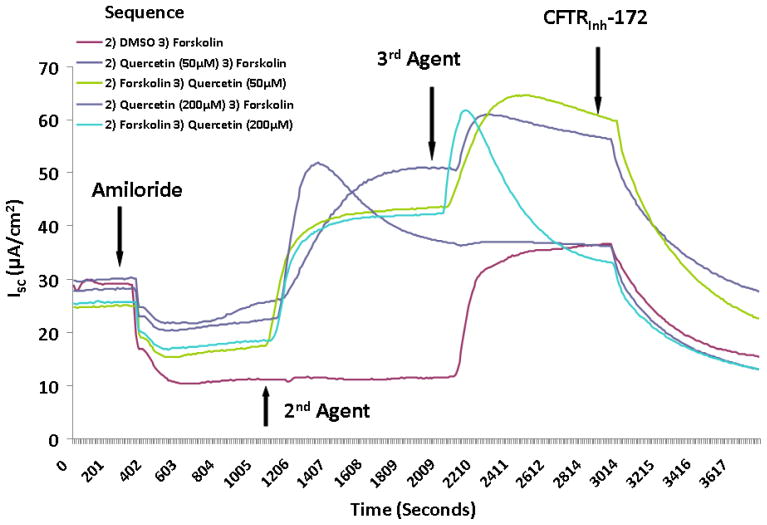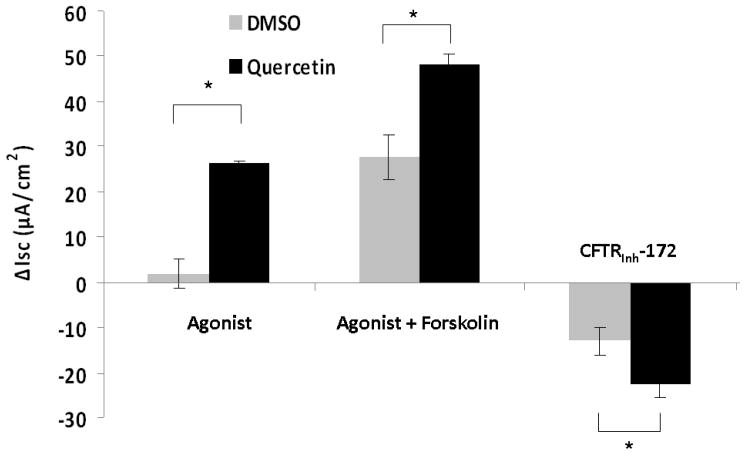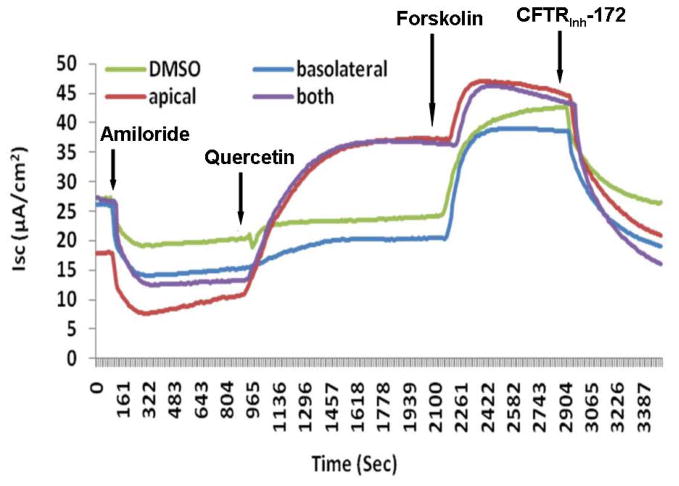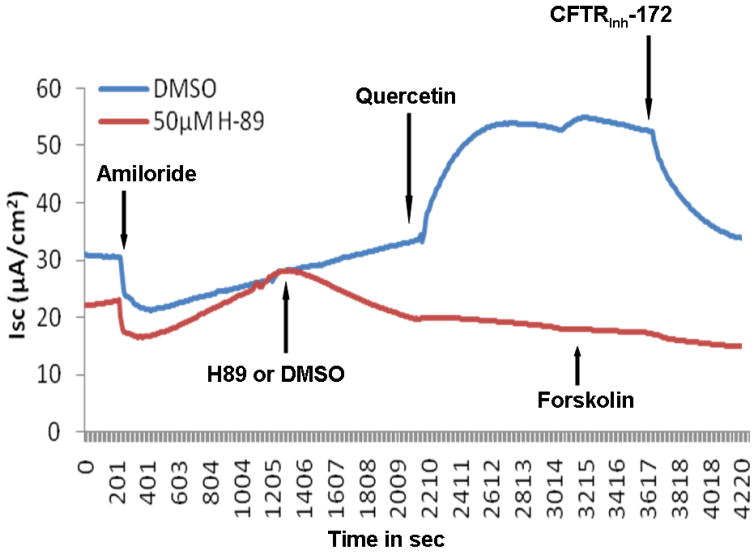Figure 1. Quercetin stimulates transepithelial Cl− transport in murine nasal septal epithelium.
Representative Ussing chamber tracings demonstrating pharmacologic manipulation of ion transport. (A) A positive deflection in the tracing (ΔISC) represents anion (i.e. Cl−) movement from the serosal to mucosal direction. Quercetin (50μM) increases anion transport both with (green tracing) and without (blue tracing) forskolin (100 nM) pretreatment when compared to DMSO control (red tracing). Increasing the concentration of quercetin (200μM) inhibits overall Cl− secretion with both pre (light blue tracing) and post (purple tracing) treatment with forskolin. CFTRinh-172 (10 μM) is added to confirm CFTR dependence. (B) Summary data indicate both quercetin (50 μM) and quercetin + forskolin (100 nm) significantly increased Cl− transport over the corresponding controls (p<0.0001). Stimulated currents were sensitive to CFTRInh-172 indicating CFTR dependence (p<0.01). (C) Ussing chamber tracings measuring ΔISC in response to apical, basolateral, and apical + basolateral application of quercetin (50 μM). Apical administration is required to induce a significant Cl- secretory response. (D) The PKA inhibitor H89 (50μM) eliminates the Cl− secretory response by quercetin (red tracing) indicating that phosphorylation of the CFTR RD is necessary for CFTR activation by quercetin.




